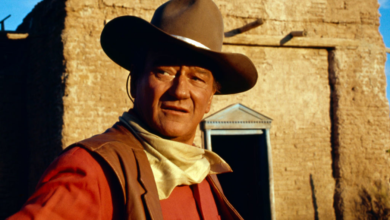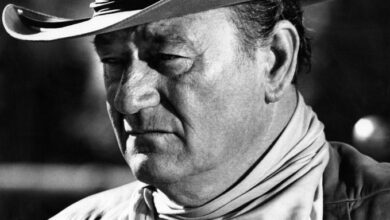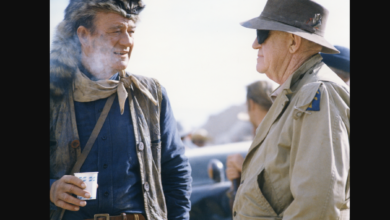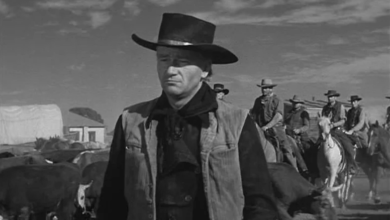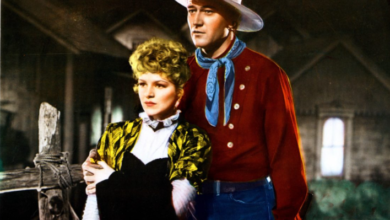‘Don’t put cowboys on the couch’: why John Wayne reckoned Clint Eastwood ruined the Western
The veteran gunslinger took aim at Eastwood’s hyper-violent, nihilistic High Plains Drifter. But who would shoot first?
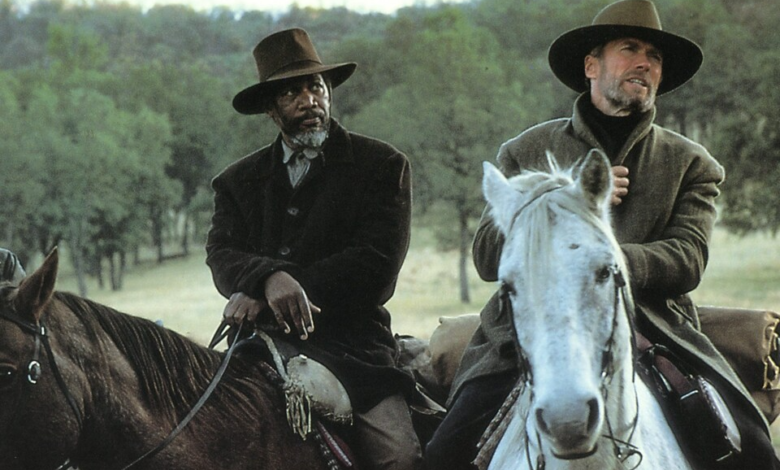
“You want me to shoot him in the back?” asked John Wayne of director Don Siegel during the filming of his Western The Shootist (1976). Wayne was stubborn as ever while working on his final completed picture. But Siegel insisted as Wayne’s character had four more gunfighters to kill in the scene – this was no time for niceties.
“I don’t shoot anyone in the back,” complained Wayne.
“Clint Eastwood would have shot him in the back,” Siegel retorted, knowing the mere name of Eastwood would be a provocation to the ageing star. Wayne turned blue with anger and bellowed: “I don’t care what that kid does, I don’t shoot people in the back!”
Much has been made of the tension between the two stars over the years. This wasn’t the first time the two elder statesmen of the Western had gunned for each other. But did they have more in common than previously thought? After all, as Eastwood told Kenneth Turan in 1998, “I grew up watching all the John Ford and Anthony Mann Westerns that came out in the 1940s and 50s. John Wayne in all those cavalry kind of Westerns and Jimmy Stewart.” Wayne clearly figured in Eastwood’s own understanding of the genre, no matter what occurred between the two.
For a time, however, Eastwood’s darker, nihilistic Westerns, and their undoubted success, was certainly a point of contention for Wayne. And tension between the two eventually came to a head thanks to Eastwood’s second feature as director, High Plains Drifter (1973), a hyper-violent fable which was a far cry from Wayne’s more romantic, celebratory Westerns. To Wayne, this shift in tone was almost an insult to generations gone by.

Turning 50 this year, High Plains Drifter was Eastwood’s first Western behind the camera. Though the actor’s rise to fame was rife with gunslingers of various moral outlooks, from early television roles such as Rawhide (1959-1965) to the brutal Italian classics of Sergio Leone such as A Fistful of Dollars (1964), it wasn’t until the 1970s when Eastwood started directing. And with the success of his accomplished 1971 debut thriller Play Misty for Me, it wasn’t long before Eastwood tried his hand at the Western. However, Eastwood’s film would typify the era’s dramatically pessimistic take on America’s Old West, to the point of being more a supernatural horror film than a classic gunslinger tale.
Scripted by Ernest Tidyman, famous for his Oscar-winning screenplay for William Friedkin’s The French Connection (1971), High Plains Drifter reflected a more modern approach to the genre in tone and content. It follows an unnamed stranger (Eastwood), who may, in fact, be a ghost, as he enters the town of Lago in search of vengeance for a US Marshal who was horse-whipped to death as the town looked on.
The atmosphere of the film is dark and tense, the violence is unforgiving and the sense of honour threadbare. Within the first 10 minutes, the stranger has tricked three men to their deaths and assaulted a woman. It perfectly summarises the tone of the new revisionist Westerns. “I’ve never pictured myself as the guy on the white horse or wearing the white hat on the mighty steed…” Eastwood admitted.
Eastwood’s film chimed with a new, grittier generation of Westerns, sitting comfortably alongside such classics as Robert Altman’s McCabe & Mrs Miller (1971), Arthur Penn’s Little Big Man (1970), and Sam Peckinpah’s The Wild Bunch (1968). These new Westerns often had a hopeless edge, dealing with down-and-out figures battling violently against poverty, the elements and each other. “High Plains Drifter was meant to be a fable,” Eastwood said, “it wasn’t meant to show the hours of pioneering drudgery. It wasn’t supposed to be anything about settling the West.”

The old Westerners of these films weren’t heroic but instead liars, cheats and frauds; greedy for gold as in Leone’s The Good, The Bad and The Ugly (1966) or drunk on lawless abandon as in John Huston’s The Life and Times of Judge Roy Bean (1972). They were also more violent films. Gunshots were no longer just a sound and a reaction shot, but often bloody, messy – and, sometimes, to the back.
Wayne was vocal in his criticisms of the new direction. “To me,” he told Playboy magazine in 1971, “The Wild Bunch was distasteful. It would have been a good picture without the gore.”
Before the new pessimistic Hollywood of the 1960s, Wayne’s cinema had defined the more heroic representation of the Old West, even when characters that he played were shown to be flawed. His epic quest at the heart of John Ford’s The Searchers (1956) as the bigoted Ethan Edwards, shows this formula exactly. “Well, it’s got some wonderful things in it,” Eastwood said of The Searchers. “I don’t think it holds up in the sense that there’s some sub-characters that wouldn’t play today.”
Yet he could have chosen any number of Wayne’s performances from the Golden Age of Hollywood, all of which demonstrated an almost mythic appreciation for the landscape and the culture of the Old West. Whether as the stubborn, determined cattle herder in Howard Hawks’s Red River (1948) or the escaped convict helping a rag-tag group across the country in Ford’s Stagecoach (1939), no matter their background, Wayne’s characters always found redemption, even if only in the eyes of the audience. His intense respect for the classical form of the Western certainly explains his often biting responses when questioned about its new direction.
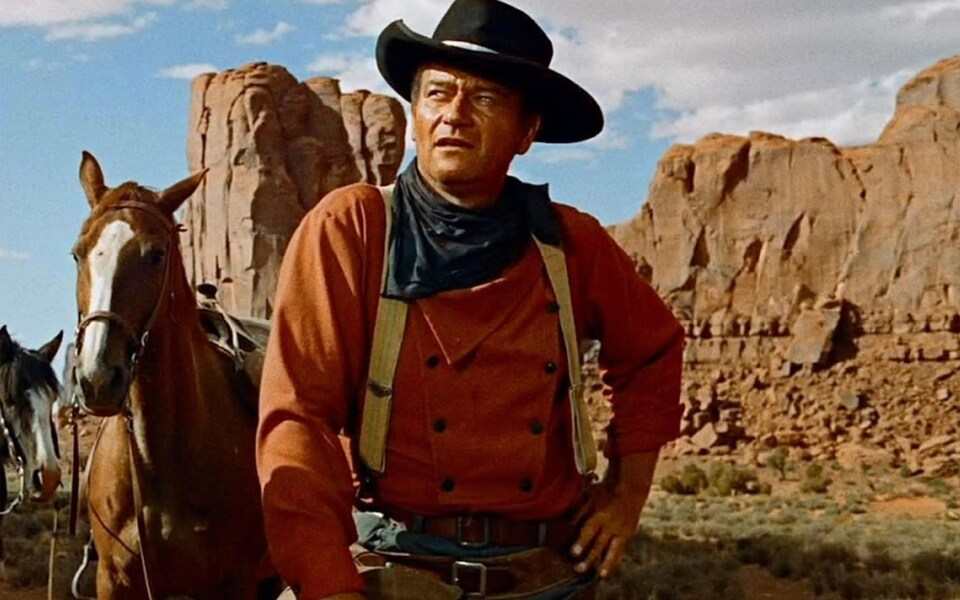
“Do you know of any country whose folklore has been destroyed?” Wayne said in 1972, “It’s our folklore… I’ve seen the pictures where they’re trying to put the cowboys on the couch, but once you make a picture of a legendary cowboy, the American and world public want to see it.” Wayne was obviously more than a little unhappy with the changes occurring in Hollywood and his beloved genre: changes that he felt Eastwood represented, as the younger man ruthlessly gunned people down in Leone’s For a Few Dollars More (1965) or Ted Post’s Hang ‘em High (1968).
Yet the stars first stepped on each other’s toes on Siegel’s Dirty Harry (1971) rather than a Western. Wayne claimed he was offered the part of tough cop Harry Callahan before Eastwood attained the role. Though the likelihood was that the physicality demanded of the part meant the studio declined Wayne rather than the other way round, either way, the film’s success undoubtedly made the star feel increasingly out of touch with American cinema. When asked about his reasons for turning it down, he gave two. “The first is that they offered it to Frank Sinatra,” he said. “I don’t like being offered Sinatra’s rejections. The second reason is that I thought Harry was a rogue cop.” The latter reason certainly rings true of Wayne’s honourable approach to character.
Either way, Dirty Harry further cemented Eastwood’s place at the centre of Hollywood. The film was an unparalleled success, and ushered in a new era of police procedural thrillers across the world. Indeed, such was its success that Wayne was left in later years chasing Dirty Harry-esque roles with lesser films in the same vein such as John Sturges’s McQ (1974) and Douglas Hickcox’s Brannigan (1975).
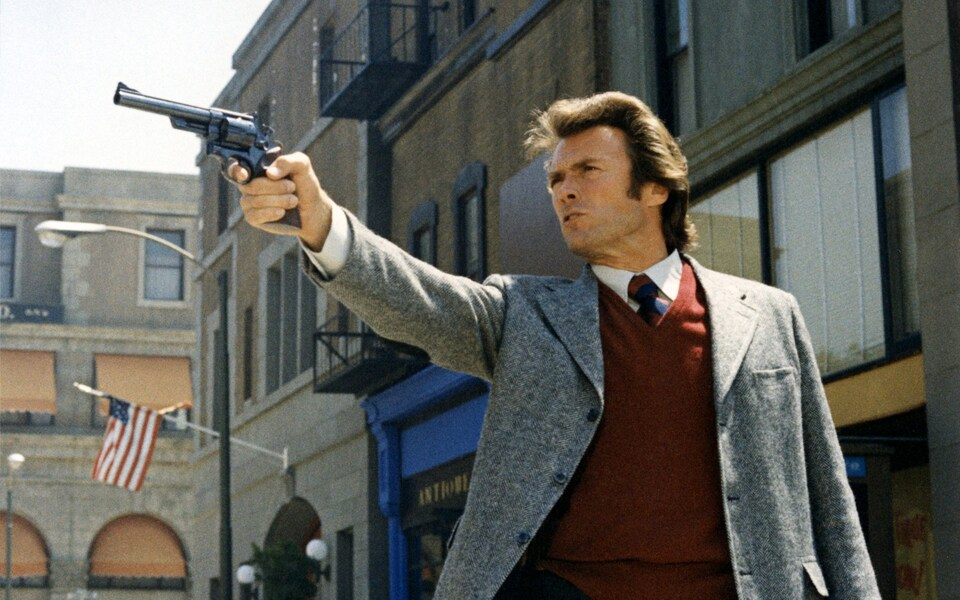
After the success of High Plains Drifter, Eastwood was riding high with the possibility of more projects. He was taken with a script by Larry Cohen called The Hostiles, a tale of a gambler who wins half an estate from an older rancher; both men forced to work together as they fend off bandits. Eastwood was determined that Wayne would play the older man, while he would play the younger. He eagerly sent the script off to the actor. Wayne was unimpressed and told Eastwood as much in a letter.
Wayne’s problem wasn’t to do with The Hostiles or its contents, but what Eastwood himself increasingly represented in the genre thanks to High Plains Drifter. “John Wayne once wrote me a letter saying he didn’t like High Plains Drifter,” Eastwood admitted. “He said it wasn’t really about the people who pioneered the West. I realised that there were two different generations, and he wouldn’t understand what I was doing.”
Eastwood didn’t respond to the letter directly but sent another revised script to Wayne in the hope its qualities would bring him round to the project. “This kind of stuff is all they know how to write these days…” Wayne grumbled. According to his son Michael Wayne, when the latest version of The Hostiles landed in the script pile, his father threw it into the sea from the deck of his boat, the Wild Goose, to the exasperated tune of “This piece of s— again.” The project faltered, and wasn’t made until 2009, and even then only as a cheap TV movie with no involvement from Eastwood.
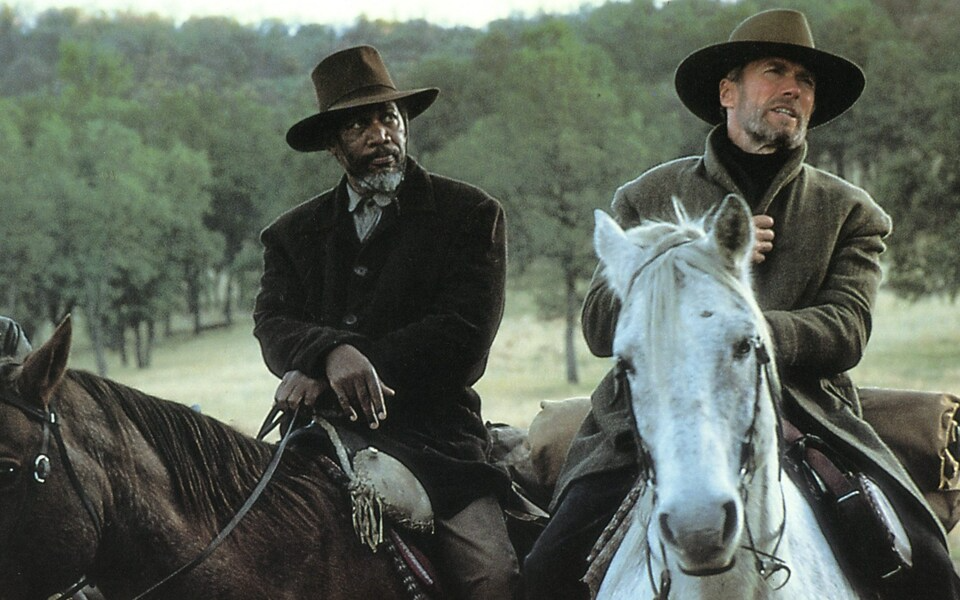
Of course, history shows that Eastwood was right to stick to his guns rather than lean in to Wayne’s increasingly dated approach to the genre. His career as a director flourished, with a string of classics such as The Outlaw Josey Wales (1976), Pale Rider (1985) and his 1992 revisionist western Unforgiven which was the last film of the genre to win an Oscar for Best Picture. Appropriately, Eastwood himself saw Unforgiven as the last chapter in revisionist westerns. “If I was going to do a last Western,” he said, “this would be it because it kind of sums up what I feel. Maybe that’s why I didn’t do it right away. I was kind of savouring it as the last of that genre, maybe the last film of that type for me.”
By that time, Eastwood was the elder statesman of screen westerns rather than Wayne. But, just like Wayne before him, he too had political questions about where the genre was going. Of Kevin Costner’s 1990 film Dances with Wolves, Eastwood’s critique could easily have been uttered by Wayne in discussing the revisionist westerns of the 1960s and 70s. “It was a kind of contemporary guy out West who was interested in ecology and women’s rights and Indian rights,” Eastwood said. “If you did it like it was, people probably couldn’t have given a crap less about that in those days, but maybe that’s what is needed to get a newer generation of moviegoers interested.”
In spite of the vast changes, and the successful legacy of the darker Westerns of the 1970s, Wayne still didn’t want to shoot people in the back. Siegel was good friends with Eastwood, so the actor naturally visited the set of The Shootist. According to Ron Howard, who also starred in the film, the two actors finally met and, contrary to so many stories surrounding their disagreements and rivalry, they got on well. A photo still exists of them smiling and laughing on set: the most famous pair of gunslingers in film history finally holstering their guns, even if only briefly.

